DEER FOOD
Big Bulbs Uneaten
Chomping down on a rosette of freshly emerging tulip leaves is just the thing to drive away winter’s doldrums — for a deer. 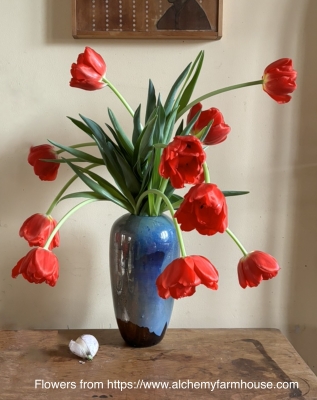 Crocuses probably taste almost as good to these creatures. There’s no need, though, for you or me to forsake the blossoms of spring bulbs; plenty of plants don’t appeal to deer palates.
Crocuses probably taste almost as good to these creatures. There’s no need, though, for you or me to forsake the blossoms of spring bulbs; plenty of plants don’t appeal to deer palates.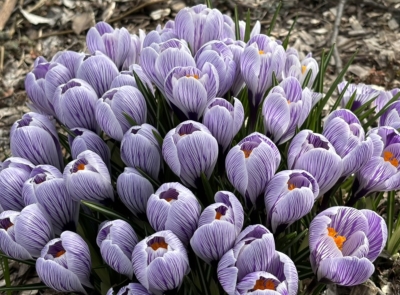
Daffodils, for example. Deer won’t eat daffodils. So plant them to your heart’s content with no worries of their tops being chomped off before the flowers even unfold.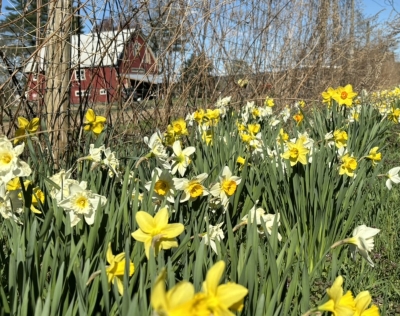
Hyacinths also don’t particularly appeal to these hoofed creatures. Although hyacinths were very fashionable flowers of the 18th century, they’re not among the most popular bulbs these days. Perhaps it’s because they don’t blend well with currently popular naturalistic landscapes. Still, if you’ve got a place for them, go ahead and plant them and don’t worry about deer upsetting your design. I grow them as much for their heady fragrance as for their (in my case) pink flowers.
Equally deer proof and, in this case, easily integrated into naturalistic plantings are grape hyacinths, or muscari. These tiny bulbs are impervious to cold, and spread to eventually blanket the ground with popsicle sticks packed with pure white, violet, or deep blue flowers. I planted them years ago, and it’s such a treat to see them popping up of their own accord — near the gate to my vegetable garden, for instance.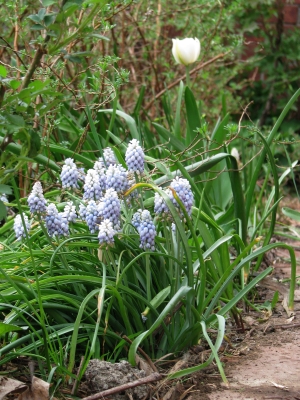
Small Bulbs Uneaten
If you segue over into the world of small bulbs, you open the door to a whole slew of flowers that both naturalize and are passed over by hungry deer. Some of these small bulbs are also the very first harbingers of spring. Snowdrop and Glory of the Snow often bloom right through the snow, the former with white blossoms, the latter in white, pink, or blue.
Each of winter aconite’s yellow blossoms, also appearing in very early spring, 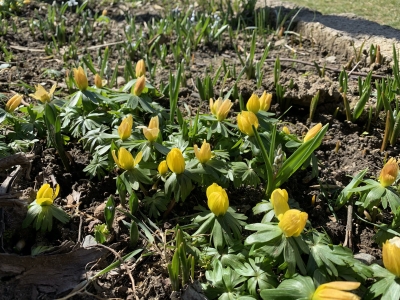 is cradled in hand-shaped leaves, decorative in their own right well after the blossoms dry up.
is cradled in hand-shaped leaves, decorative in their own right well after the blossoms dry up.
After this early show subsides, striped squill — also known as puschkinia — could share the stage with muscari, both soon to bloom. The loose, pale blue clusters of striped squill won’t do for the garden what Darwin tulips do — or would do if the deer wouldn’t eat them — but they are welcome nonetheless. They’re happily spilling from my terrace bed onto the lawn where they mingle with the grass.
Crown imperial is one of my favorites, a deer proof bulb that could provide the elegance of tulips. The stalks shoot skyward two to three feet high and then are capped by a tuft of leaves encircled below by a “crown” of downward pointing red or yellow flowers. 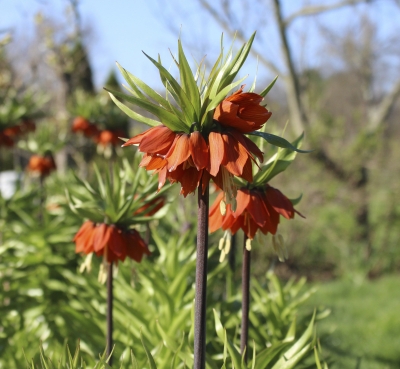 Crown imperial’s relatives, Persian lily and guinea hen flower, are also passed over by deer and are beautiful in a more relaxed rather than regal manner.
Crown imperial’s relatives, Persian lily and guinea hen flower, are also passed over by deer and are beautiful in a more relaxed rather than regal manner.

Guinea Hen Flower
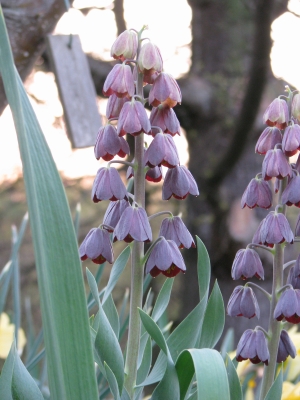
Persian Lily
A warning or an attraction: If you grow Crown Imperial, you might think a skunk is skulking around your garden. That’s the aroma wafting from the plants. Some people — I, for one — like it in moderate doses. If it makes you more open to enjoying the aroma, it comes from mercaptans, also part of the aroma profile of cannabis, coffee, and hops.
English bluebells and wood hyacinth, both botanically squills, share late April bloom with crown imperial. These two squills are perfect for naturalizing and brightening the dappled shade of a mid-spring woodland.
Ornamental Onions, Uneaten
Even as spring rolls into summer, there are colorful bulbs that can make deer look elsewhere for a meal. Flowering onions — alliums — fill this time slot, mostly appearing as pastel pompoms atop slender stalks.
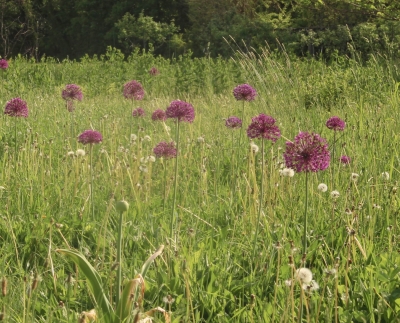
Purple Sensation allium in field
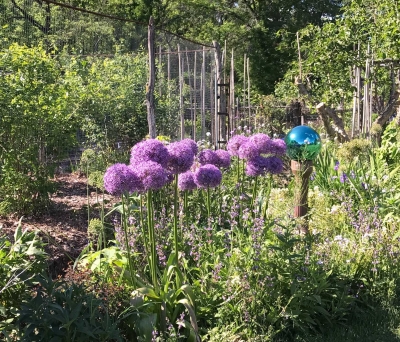
Alliums in garden
If you’re not familiar with allium flowers, take a look at chives when they come into bloom in the next few weeks. Now imagine those blossoms in deep blue, or in pink, even yellow. And rather than golfball size clusters of flowers, imagine flower heads the size of volleyballs,
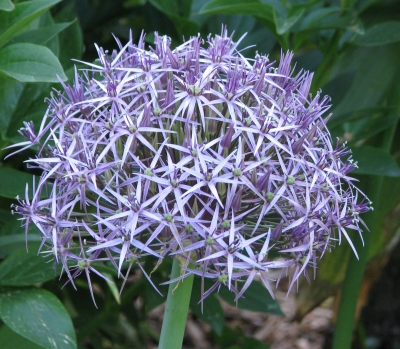
Star of Persia
or baseball size clusters sending out thin streamers of male flowers like fireworks.
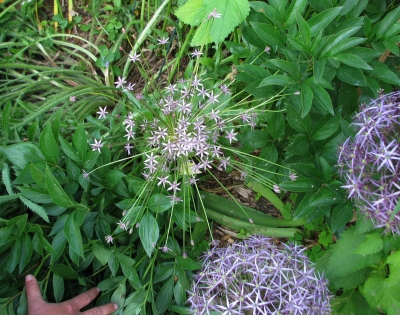
Allium schubertii
These are some of the variations on the basic allium flower theme.
This sampling of bulbs should be sufficient to convince you that deer need not reduce your spring landscape to a monochrome of green. After once watching deer munch the leaves off a friend’s garlic plants, I do hesitate to recommend any plant as completely deer-proof. Still, planting the above mentioned bulbs generally sends out the signal: No food here, deer.
But there are reports of some food here, dear. That is, food for humans. Both tulip petals and bulbs have been used as human food despite the fact that all plant parts contain varying amounts of toxins. Depending on the amount eaten, the plant part, and other variables, could cause stomach pain, salivation, depression, diarrhea, sweating, nausea, vomiting, even death. Skin contact can cause an allergic reaction resulting in irritation with tingling, redness, blisters, and cracks.
The toxicity level is admittedly low. After all, tulip bulbs helped the Dutch survive famine during World War II. The petals are sometimes used as garnish, having “a mild bean-like taste, to a lettuce-like taste, to no taste at all.” I consider any part of the plant to be a famine food, at best. I’m not that hungry.
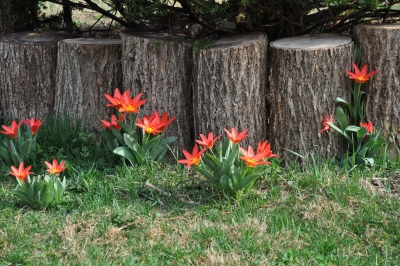
Wild tulip species


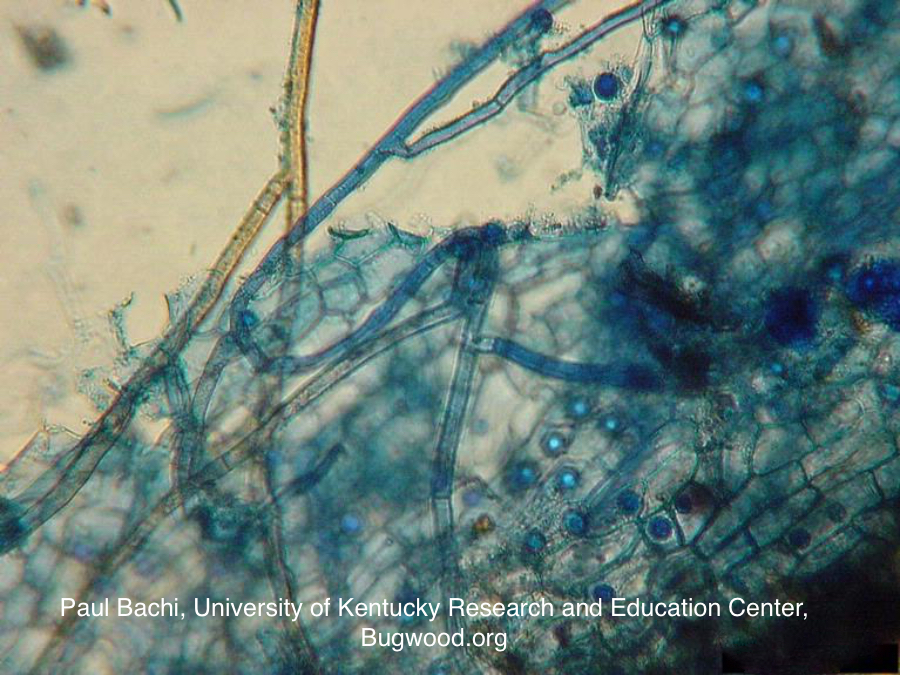
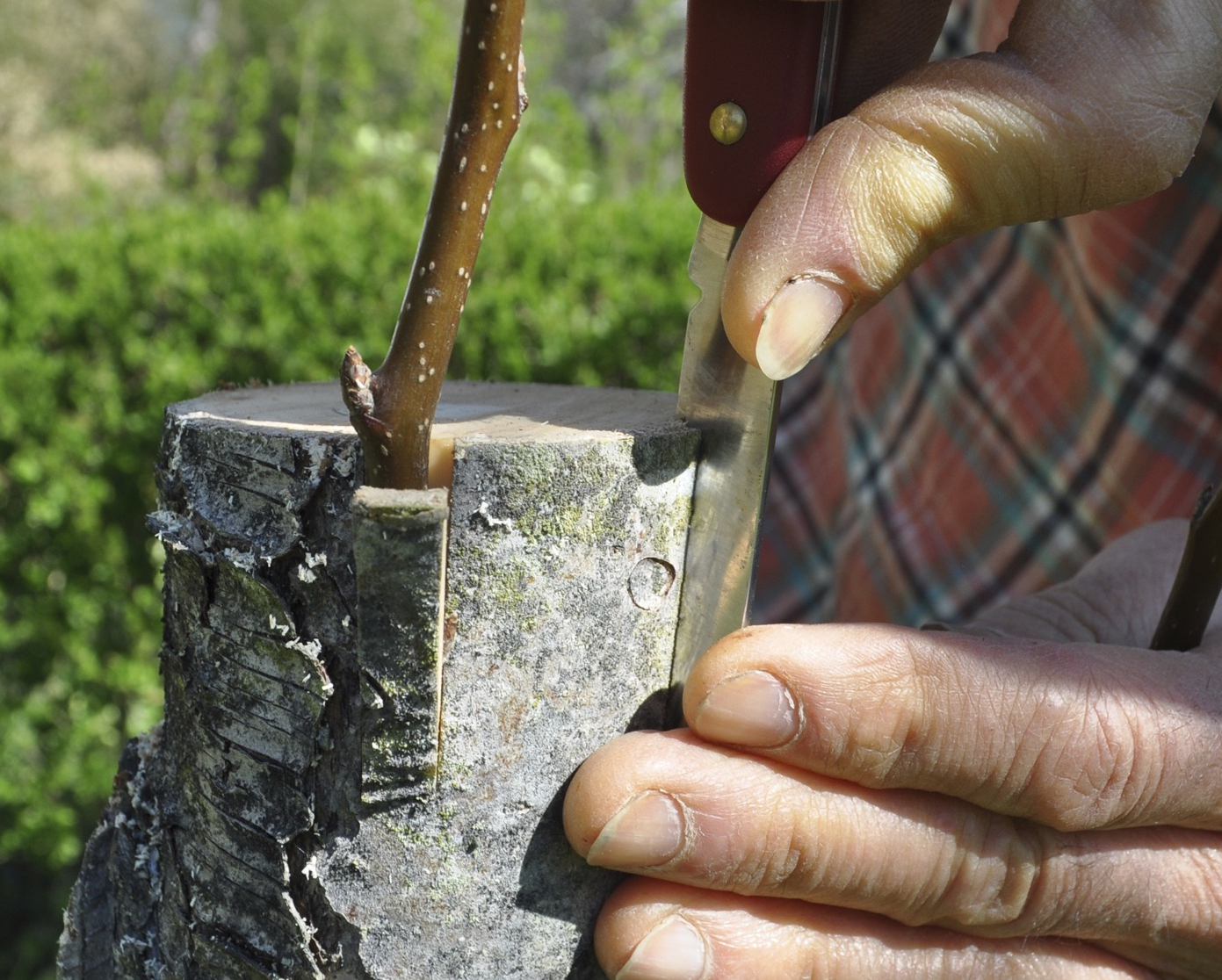
Two years ago, I tried planting more hyacinth after reading that deer do not eat them. Unfortunately, the vole seemed to enjoy eating them. They never came up. I have now planted a bunch of daffodils in the same area and this past winter the vole activity seemed to be nonexistent. Maybe this fall I’ll try again.